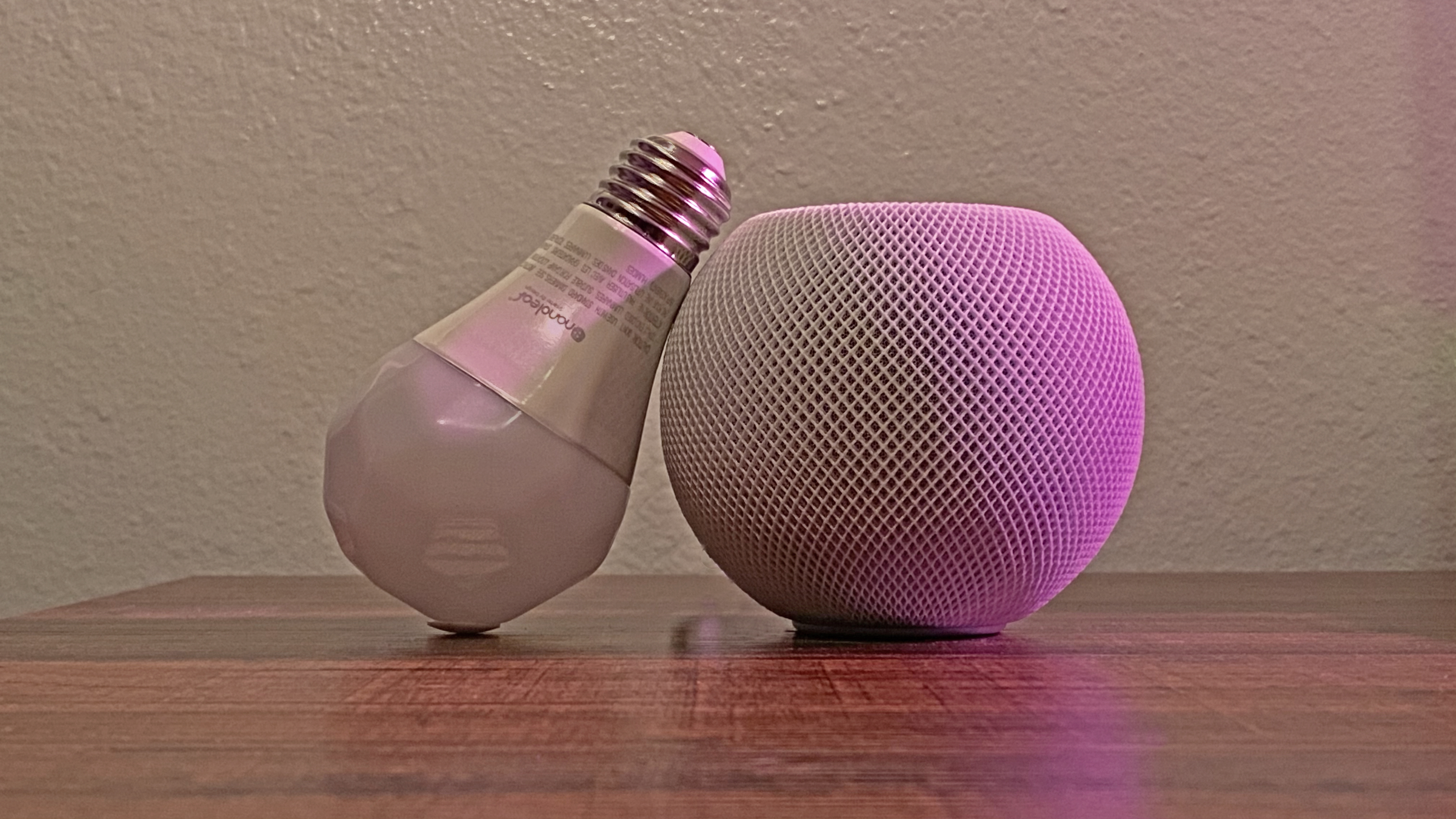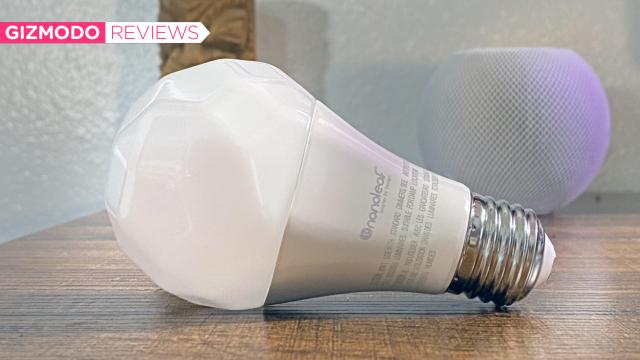There are two kinds of smart bulbs in this world — those that work well, and those doomed to languish in drawers with all of your other bitter regrets. If you haven’t done your research, or just failed hard a lot, you have probably come to the same conclusion many of us have: Just buy the friggin’ Philips Hue bulbs. Yes, they’re pricey, but the rest of the market is largely a wasteland; the affordable alternatives are so absolutely terrible that the fact you paid any money for them at all feels a little like punishment.
Enter Nanoleaf Essentials A19 bulbs. Built on the back of Thread, the latest wireless standard to enter the smart home fray — see our explainer here — these bulbs promise to be super fast, being the first to capitalise on the Thread capabilities of Apple’s HomePod Mini. They’re also relatively cheap at $US20 ($26), effectively hitting a sweet spot in pricing that, if they work well, should probably make Hue-maker Philips sweat — but only a little. The benefits of these bulbs remain contingent on the presence of a HomePod Mini, which we’ve yet to see real sales figures on. Otherwise, it’s just a (very nice) Bluetooth bulb: slow as the dickens, and buggy as the…well, as the buggy dickens.

Nanoleaf Essentials A19 Smart Bulb
What is it?
A hub-less, Thread-compatible smart bulb — the first of its kind on the market
Price
$US20 ($26)
Like
This is the only colour smart bulb I’ve used in its price range that I would actually replace a Hue bulb with. Its colour and responsiveness are great, and setup was very easy. No hub makes this bulb a no-brainer if you have a compatible border router, which is currently limited to the HomePod Mini.
Don't like
The only option besides Thread is Bluetooth, which is glitchy, sensitive to interference, and very short range, making it far less useful if you don’t have Apple’s little noise ball. Its brightness when using solid colours is lacking.
Aesthetically, there can be no doubt of these bulbs’ Nanoleafiness. Their Archimedean solid shape — which I am not going to type the name of — is very much in keeping with the company’s insistence that light need not come from a fully-rounded enclosure. It’s like bringing a low-poly indie game object to life!
Setup was characteristically easy and done fully through the iOS Home app. The bulb felt like it maybe took a bit longer than most devices to pair with my home, and it was a little herky-jerky out of the gate, but after it finished up whatever initialization it needed to go through, I found it very responsive. So responsive, in fact, that if you’d broken into my home and put it in one of my normally Hue fixtures, I wouldn’t have noticed for days.
Thread or no, there was no major speed boost over Hue via Siri on my HomePod Minis, with both bulbs responding within a perfectly-fine 1.5-ish seconds on average. For grins, I set the Nanoleaf up as a Bluetooth-only light, and I can safely say: Just don’t. When it did work, it took more than twice as long, sometimes much, much longer at around 20 or 30 seconds.

As for colour reproduction, the bulbs are fantastic, as you’d expect them to be, coming from Nanoleaf. Accurate though they are, however, they were extremely dim when using colours, so it’ll take more of them to live out your Miami Vice fantasy. Conversely, when using normal, brighter white light, the dimmest setting feels like it could’ve been dimmer still. That said, at 1100 max lumens, the Essentials bulb does white very well.
Thanks to a recent firmware update, I was able to test Apple’s Adaptive Lighting feature. Throughout the day, it goes from cool to warm lighting, being at its cosiest in the wee hours. Not to be outdone, the Nanoleaf app’s Circadian Lighting takes it a step further, letting you set the shades you want for the start and end of your day. Also in their app, you can set colour-changing scenes, and it’s promised they’ll soon also take on features from the flat panel lights like Screen Mirror. Like any good HomeKit device, however, you needn’t use their app to use the bulb — the Home app will suffice, if your needs are simple enough.
The feature set already baked into the Essentials A19 is bonkers for the price, but only if you have a HomePod Mini. Provided you’ve got one, the bulbs work just as fast as Hue’s, and in the time I spent with it, more reliably, as promised. Thread’s claims of a more stable network so far seem true. That said, is the Essentials bulb a revelation? No, it’s still a light bulb, albeit a very cool one. But it’s $US30 ($38) less than the biggest player in the space, and as far as I’m concerned, is exactly as good at doing its main job: Being a light.
README
- The first Thread-compatible smart light definitely makes the case for Thread as a serious, non-hub competitor to the typical smart home equipment.
- Has excellent colour and response time.
- The Nanoleaf scenes are fun to play with, if not as impressive as they are on their panel light brethren.
- Its blocky, geometric shape is unique and more fun than other options.
